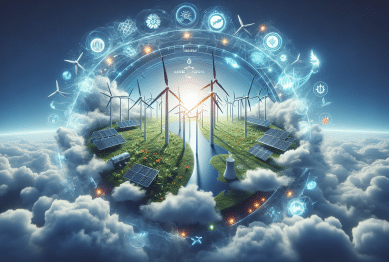News feeds shape public opinion and highlight issues driving major global shifts. This guide explores the impact of digital news cycles, how stories trend, reader influence, and the evolving ways people interact with current events—offering deeper insight into what headlines reveal about society.
Understanding News Feeds and Their Role in Society
News feeds have become central to how people consume information. Once dominated by newspapers and television bulletins, news consumption now happens in real-time, accessible at any hour. Digital news platforms curate headlines, images, and video to deliver updates that reflect public interest as well as editorial judgment. Their ever-evolving lists capture everything from government policy shifts to viral cultural moments, creating an environment where breaking news travels faster and wider than ever.
The design of digital news feeds is not accidental. Algorithms evaluate user interests, clicking habits, share patterns, and even location data to promote certain stories. This influences what is seen and, subsequently, which topics become national or international talking points. As news algorithms adapt, they set a continuous feedback loop between audience engagement and editorial decisions, enhancing stories that receive the most digital traction.
Understanding this digital landscape is crucial. People are often presented with curated selections instead of a broad, unbiased sample. This personalization can make it easier to stay informed but can also limit exposure to diverse viewpoints. Consequently, the flow of information in society now depends as much on technology and user choices as on the journalists reporting the facts (Source: https://www.pewresearch.org/journalism/).
The Evolution of Trending Stories and Viral Content
It’s not unusual for a single event to capture media attention worldwide. From political debates to natural disasters, stories explode across news feeds, inspiring reactions almost instantly. The difference today is the speed and scope with which these topics spread. As more users engage with a story—by commenting, sharing, or searching—algorithms prioritize its visibility, pushing it into more feeds and amplifying its reach quickly.
Trending content doesn’t just inform: it steers conversations in workplaces, schools, and communities. Sometimes, stories that become viral reveal what societies find urgent or compelling at the moment. An unexpected weather phenomenon, a technological breakthrough, or a public health guideline—all can trend based on a mix of reporting, public sentiment, and the influence of digital platforms. Viral moments also offer clues about the values and anxieties running through the broader population (Source: https://www.niemanlab.org/).
While trending topics deliver information rapidly, they come with advantages and risks. Readers gain access to real-time developments and diverse voices, but stories can crowd out other important issues deserving attention. Monitoring which stories go viral, and understanding why, can help filter noise from significance and guide informed engagement with the news ecosystem (Source: https://www.poynter.org/).
How Public Engagement Shapes Headlines
Reader engagement is key to how news stories are promoted or buried. When people comment, react, or share, their actions signal to both journalists and algorithms that a topic matters. This phenomenon, sometimes called ‘social proof,’ guides editors in real-time, influencing newsroom priorities as they strive to meet public demand. Even the wording of headlines is tested via digital analytics to optimize engagement.
Some digital platforms invite direct user contributions—think of public comments, open forums, or interactive polls embedded in news articles. These contributions don’t just promote stories; they can shift the angle or depth of coverage in follow-ups, highlighting trends not visible through reporting alone. Reader feedback can bring marginalized stories into the mainstream when enough voices unite.
However, the dynamics of public engagement aren’t always straightforward. Sometimes, a small but vocal group can propel a topic to prominence, even if overall interest remains low. Conversely, important stories can fade if they lack initial engagement. Understanding how collective digital behavior influences editorial choices—and vice versa—reveals much about the intersection of democratic participation and news media (Source: https://www.americanpressinstitute.org/).
New Formats and the Rise of Multimedia Journalism
Multimedia journalism is now central to the modern news experience. Platforms deliver video clips, infographics, podcasts, and interactive maps that complement written articles. This diversification has made stories more engaging and accessible, especially for younger audiences accustomed to visually rich interfaces. Newsrooms now employ teams dedicated to visual storytelling, data journalism, and even social media curation.
These new formats have extended the reach of important stories. For complex investigative pieces or scientific findings, data visualizations can clarify trends that raw numbers cannot. Short-form video recaps and livestreams allow for immediate updates during major events, keeping users engaged and informed in real time. Podcasts provide deeper analysis, letting interested audiences explore issues from multiple perspectives on their own schedules.
While multimedia output enriches the audience experience, it also introduces challenges. News producers must ensure accuracy across diverse content types, mindful of the risk of misinterpretation or oversimplification. The move toward multimedia storytelling reflects both consumer preferences and the expanding skillset within journalism itself (Source: https://www.rjionline.org/).
Concerns About Misinformation and Reader Trust
The rise of digital news feeds has also expanded the potential for misinformation. Falsehoods can spread rapidly, especially when provocative headlines or manipulated images generate strong reactions. In response, major platforms continue developing resources to flag, fact-check, or de-rank questionable content, but the challenge remains significant. News consumers must apply critical thinking and seek multiple sources when navigating breaking alerts and sensational trends.
Building and maintaining trust in news organizations is an ongoing effort. Transparency about sources, editorial corrections, and behind-the-scenes reporting on fact-checking processes can help restore confidence. Leading outlets invite users to question, verify, and even participate in the journalistic process, recognizing that trust is collaborative, not guaranteed (Source: https://www.spj.org/ethicscode.asp).
Efforts to promote media literacy have grown. Schools and community groups increasingly offer resources to help people distinguish news from opinion, recognize clickbait, and analyze the reliability of viral stories. Trust in news feeds correlates closely with a population’s critical media skills—highlighting the importance of education in digital news environments.
The Future of News Feeds and Personal Information Ecosystems
As technology evolves, news feeds will change too. Artificial intelligence and personalized delivery systems continue to redefine what individuals see when they log on. Some platforms experiment with context-driven news—serving updates tied to a user’s activities, locations, or habits, potentially increasing relevance while raising questions about privacy and information diversity.
Researchers and journalists debate the societal effects of increasingly personalized news. On one hand, tailored feeds can make news more enjoyable and efficient to consume. On the other, they risk narrowing worldviews and reinforcing existing beliefs. The future will likely involve ongoing balancing between relevance, diversity, and the ethical responsibilities of those who craft and curate news feeds.
Public awareness about how digital information circulates is critical. As more sectors adopt similar personalization strategies, understanding the motivations, structures, and safeguards behind algorithmic curation will empower informed choices. News feeds aren’t just about headlines—they’re about the flow and evolution of ideas in society (Source: https://datasociety.net/).
References
1. Pew Research Center. (n.d.). Journalism & Media. Retrieved from https://www.pewresearch.org/journalism/
2. Nieman Lab. (n.d.). About Nieman Lab. Retrieved from https://www.niemanlab.org/
3. Poynter Institute. (n.d.). About Poynter. Retrieved from https://www.poynter.org/
4. American Press Institute. (n.d.). The Media Insight Project. Retrieved from https://www.americanpressinstitute.org/
5. Donald W. Reynolds Journalism Institute. (n.d.). Home. Retrieved from https://www.rjionline.org/
6. Data & Society Research Institute. (n.d.). Research. Retrieved from https://datasociety.net/









